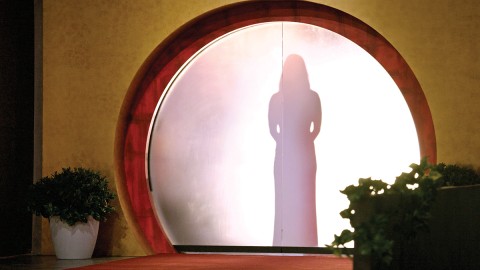Watching The Circle and Love Is Blind while practicing social distancing
Two reality TV shows remind us why physical connection matters.

Just in time for national quarantine and shelter-in-place orders, Netflix released two reality television shows that explore how we relate to each other through both virtual technologies and embodied, social spaces. Both The Circle and Love Is Blind imagine a world where physical connection doesn’t matter. Then they both remind us just how much it does.
In The Circle, eight contestants are isolated in private apartments where they have no contact with the outside world and can only interact with each other on a private social media platform (called the Circle). The contestants are playing for the chance to win $100,000 by becoming the most popular person in the game, as voted on by the other contestants. They play quiz games and chat with each other on private chat and carefully curate the photos they show to other contestants. They never get to see each other in real life, or even via live video stream. We, as viewers, watch them navigate their mundane lives—cooking meals, brushing their teeth, doing push-ups—while they narrate their feelings and reactions to the game.
The players know they are playing a game, and they strategize aloud about how to get “likes” and win influence. Some of them pose as people they are not—like Seaburn, a man who pretends to be Rebecca using his girlfriend’s photos, and Karyn, a lesbian who poses as a much thinner straight woman named Mercedeze. Everyone is posturing, but these “catfish” (people who make up online identities to win others over) are more extreme examples of people calculating how strangers will respond to them online.





